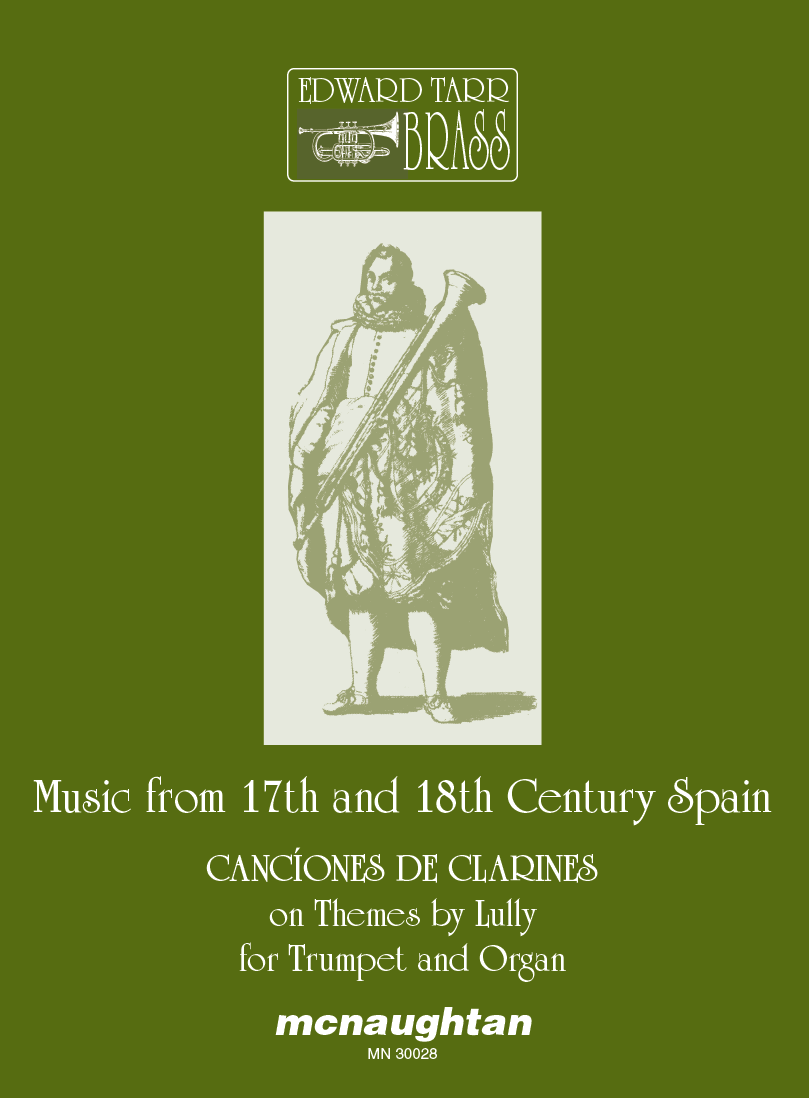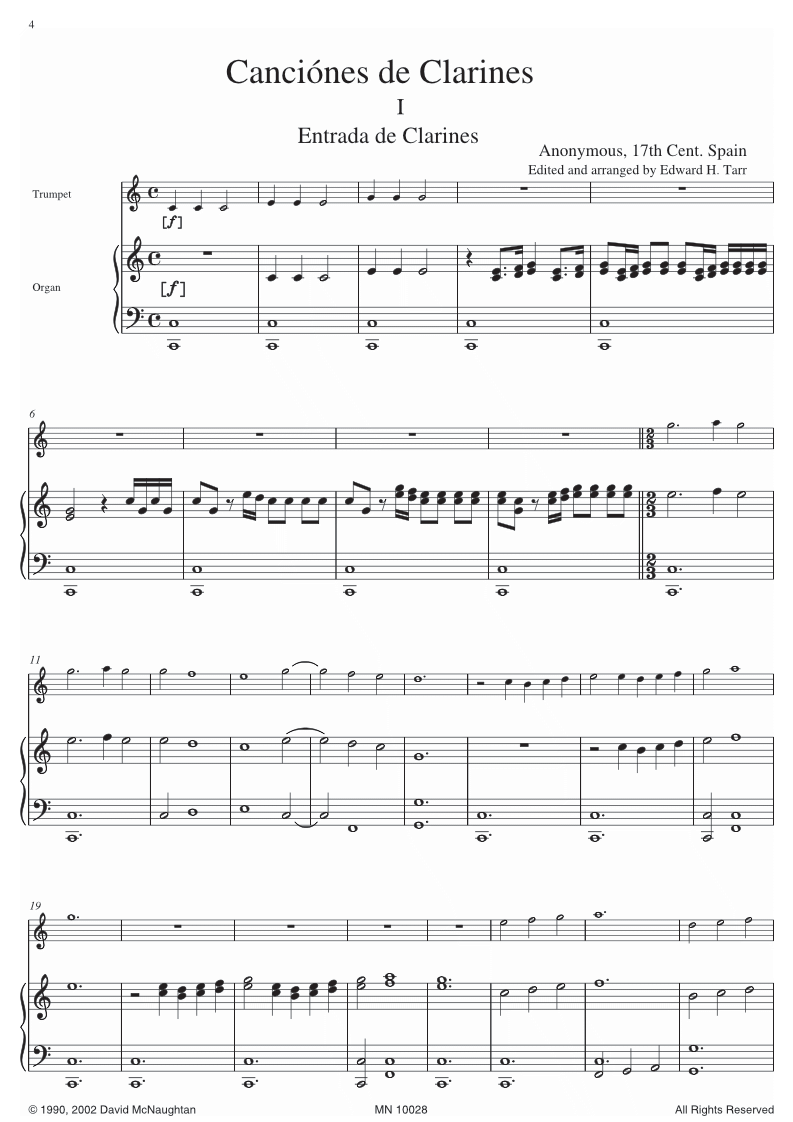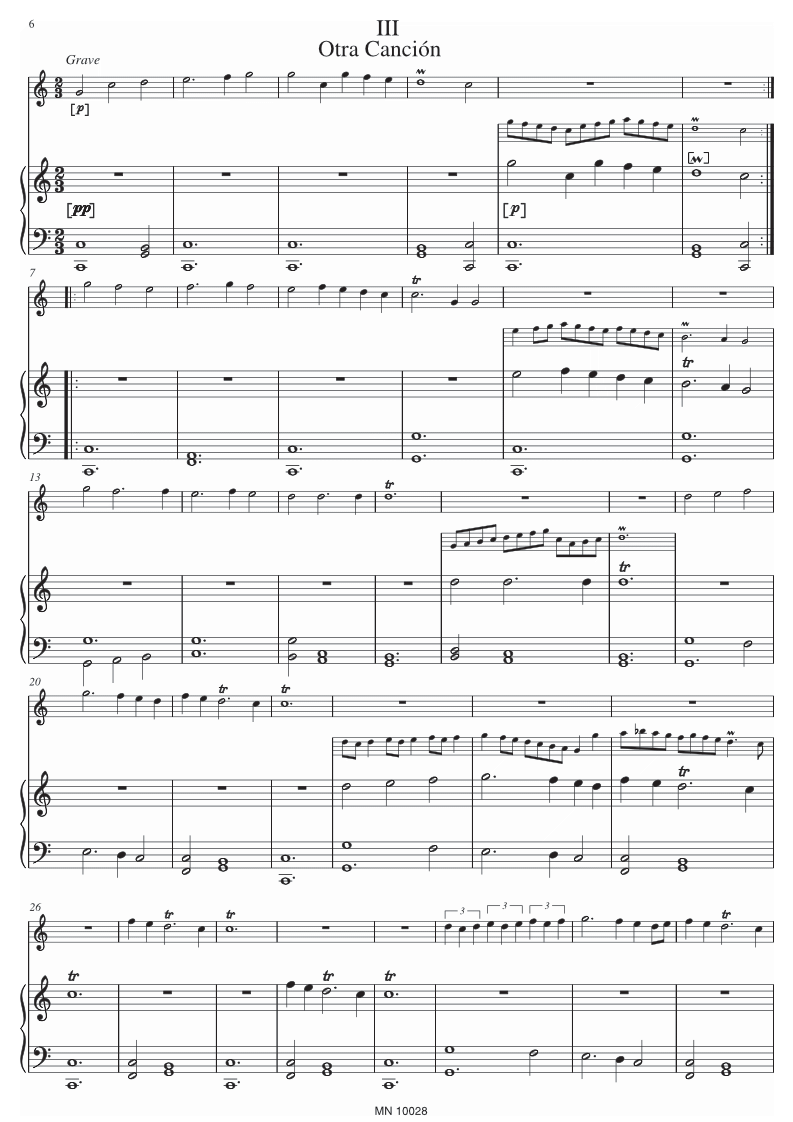
Anon/Tarr Canciónes de Clarines
Instrumentation: Trumpet, OrganParts: Trumpet in D und high A, Organ
Difficulty (I-VI): III
Series: Music from 17th and 18th Century Spain
Editor: Edward H. Tarr
From the beginning of the 16th century, there was a rich mutual influence between organ and wind music on the Iberian peninsula. During the second half of that century, besides the already known music-making in groups, solo wind instruments started to be used with the organ. (For example, during the Christmas and New Year celebrations in 1576/77 for the Spanish and Portuguese kings, Philip 11 and Sebastian, at Guadalupe abbey, a solo cornettist performed several times with the organist, with and without singers.) The scores and parts to these performances have been lost. If we wish to revive this old performing tradition in our time, we must do intensive research. In the search for performable trumpet music, the presence of melodies conforming to the harmonic series is an important clue, since the natural trumpet of that day was inextricably associated with this series of notes. The four movements of the present "Cancíones de Clarines" form such a work.
The source of this anonymous work is a four-volume manuscript collection entitled Flores de música, collated between 1706 and 1709 by the Madrid organist, Fra António Martin y Coil. Three of the four movements can also be found in other compositions. For two of the movements, the composer's name is even certain: the second and fourth movements come from operas of none the less a personage than Jean-Baptiste Lully (1632-1687), Arnadis (1684) and Bellèrophon (1679), in which the melodic line is sometimes taken over by a real trumpet. Fra António's version, then, will have been a contemporary transcription for organ of an orchestral work, so that a re-transcription of the upper part for the trumpet in the present edition does indeed seem justified. The Cancíones first movement can be found in slightly altered form in an anonymous organ batalla in another Madrid manuscript, and reminiscences of it are also woven into the concluding section of another particularly long battle piece, it too anonymous, known as the "Batalia famossa". All four movements, whether by Lully or anonymous, work with charming echo effects and are of diverse character despite the fact that all of their melodies conform to the harmonic series.


